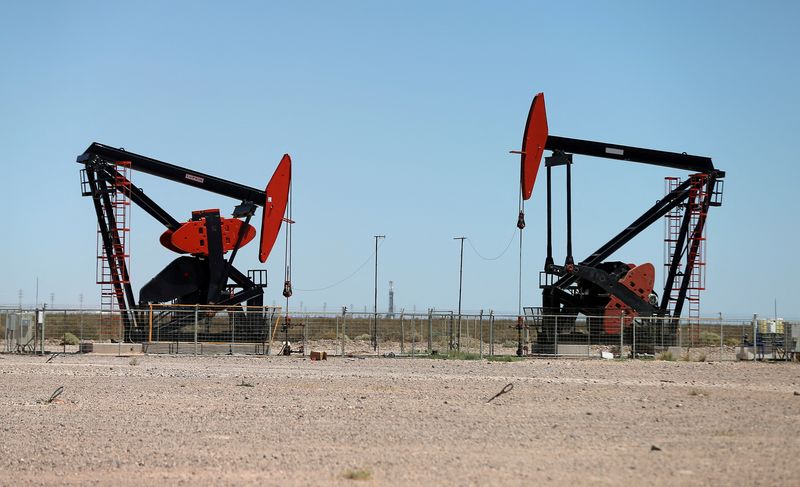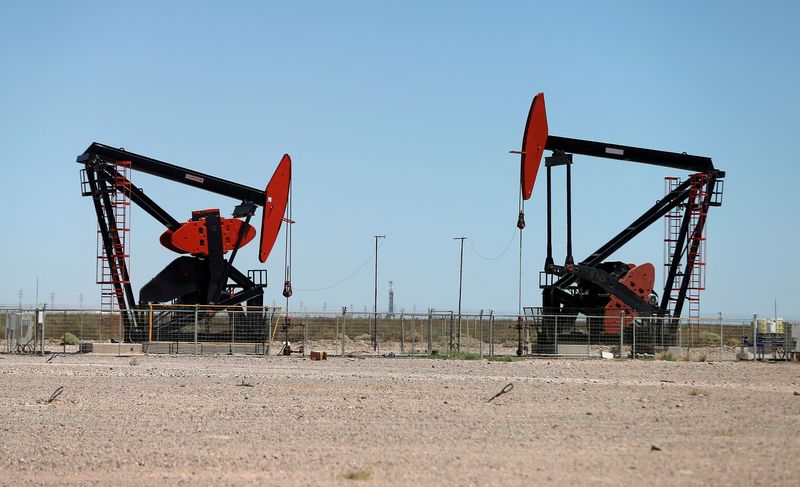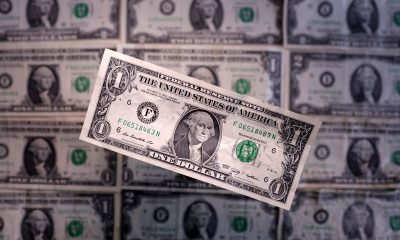Commodities
Oil dips on prospect of peak US production, despite strong demand signals


© Reuters. FILE PHOTO: Oil pump jacks are seen at the Vaca Muerta shale oil and gas deposit in the Patagonian province of Neuquen, Argentina, January 21, 2019. REUTERS/Agustin Marcarian/File Photo
By Paul Carsten
LONDON (Reuters) -Oil prices dipped on Wednesday amid signs the United States, the world’s biggest oil producer, is at peak production, offsetting positive crude demand signals from top consumer China.
futures were down 29 cents to $82.18 a barrel at 1207 GMT, while U.S. West Texas Intermediate (WTI) crude was down 32 cents to $77.94.
China’s economic activity perked up in October as industrial output increased at a faster pace and retail sales growth beat expectations, an encouraging sign for the world’s second-largest economy.
The International Energy Agency joined the Organization of the Petroleum Exporting Countries and its allies (OPEC+) in raising oil demand growth forecasts for this year, despite projections of slower economic growth in many major countries.
“With China being a scapegoat for much of the world’s lack of industrial demand, this glimmer of light ought to aid oil’s progress but the reluctance is so far winning out,” said John Evans of oil broker PVM in a note.
Downward pressure on oil prices may come from the supply side, with the United States “likely at peak production for crude,” while the delayed release of oil data from the world’s biggest producer makes the investment situation more opaque, Evans said.
The U.S. Energy Information Administration (EIA) will release its first oil inventory report in two weeks on Wednesday, after a delay last week due to a systems upgrade. [EIA/S]
The Financial Times reported on Wednesday that Denmark will be tasked with inspecting and potentially blocking tankers with Russian oil sailing through its waters under new European Union plans, as the West explores more ways of enforcing a price cap on Moscow’s crude.
However, it is still to be seen how Denmark will enforce this.
A softer U.S. inflation reading that bolstered expectations for an interest rate cut by the Federal Reserve next spring sent the U.S. dollar down to a two-and-a-half-month low against a basket of other currencies. A weaker dollar can boost oil demand by making crude cheaper for buyers using other currencies.
British inflation also cooled in October, and more than expected, reinforcing expectations that the Bank of England’s hiking cycle has ended, with the Federal Reserve and European Central Bank also seemingly having reached the peak for interest rates.
Elsewhere, the European Union reached a deal on Wednesday on a law to place methane emissions limits on Europe’s oil and gas imports from 2030, pressuring international suppliers to clamp down on leaks of the potent greenhouse gas.
Commodities
Oil prices rise; U.S. crude inventories plunge, Russia-Ukraine truce eyed
Commodities
India’s Reliance to stop buying Venezuelan oil over US tariffs, sources say
Commodities
Oil prices climb on Venezuela supply worries

 Forex3 years ago
Forex3 years agoForex Today: the dollar is gaining strength amid gloomy sentiment at the start of the Fed’s week

 Forex3 years ago
Forex3 years agoUnbiased review of Pocket Option broker

 Forex3 years ago
Forex3 years agoDollar to pound sterling exchange rate today: Pound plummeted to its lowest since 1985

 Forex3 years ago
Forex3 years agoHow is the Australian dollar doing today?

 Cryptocurrency3 years ago
Cryptocurrency3 years agoWhat happened in the crypto market – current events today

 World3 years ago
World3 years agoWhy are modern video games an art form?

 Commodities3 years ago
Commodities3 years agoCopper continues to fall in price on expectations of lower demand in China

 Economy3 years ago
Economy3 years agoCrude oil tankers double in price due to EU anti-Russian sanctions



























